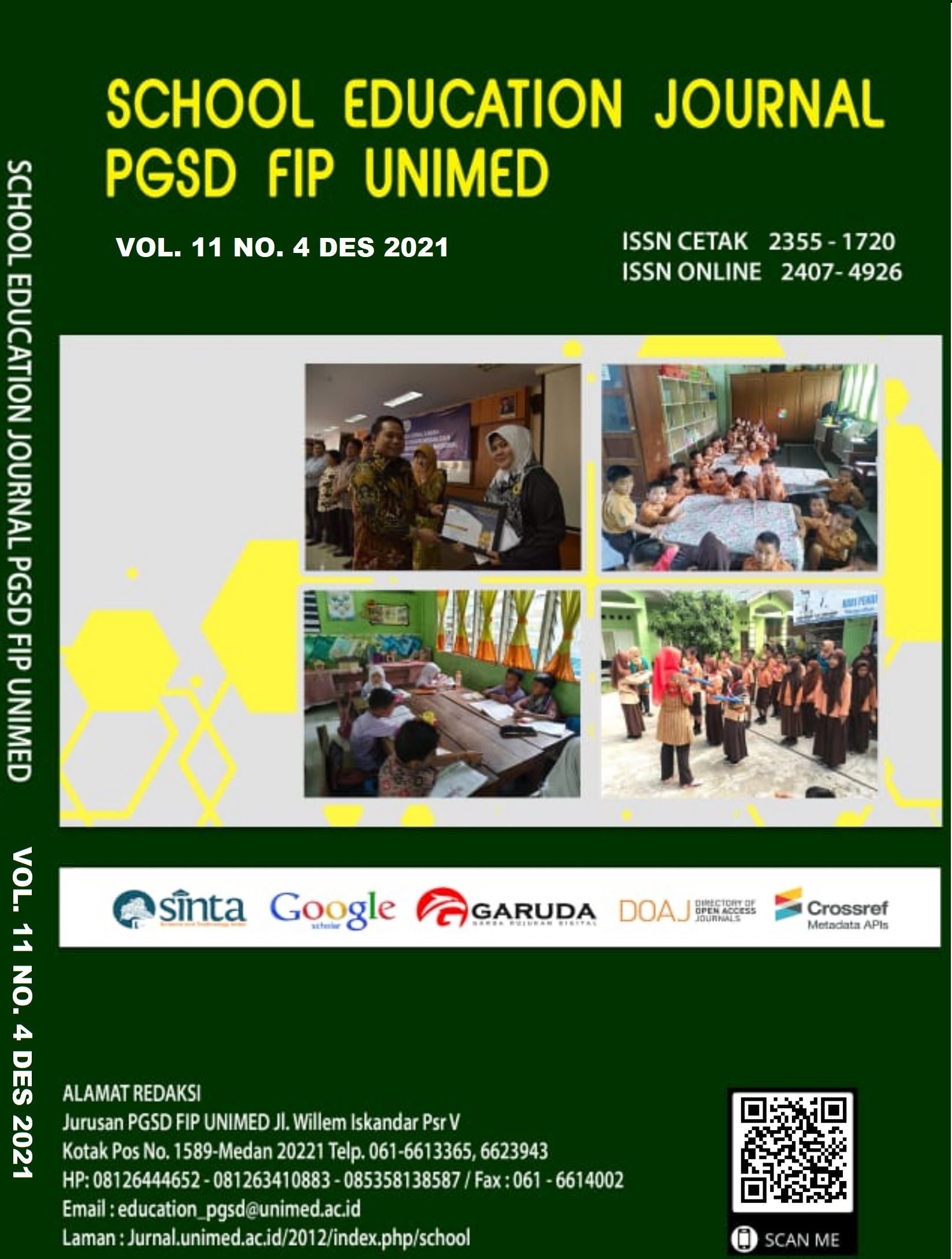PENDIDIKAN MORAL DALAM CERITA ANAK œSAMOSIR DAN œKELINCI YANG SERAKAH BAGI ANAK SEKOLAH DASAR
DOI:
https://doi.org/10.24114/sejpgsd.v12i4.40966Keywords:
Children's Story, Moral Education, Interpretation Of Clifford GeertzAbstract
The purpose of this study was to determine moral education in the children's stories "Samosir" and "The Greedy Rabbit". By knowing the moral education of children's stories, it is clear that these children's stories can build the character and social character of elementary school children; educating the emotional, spiritual, and intelligence of elementary school children. This goal is motivated by the problem that moral education must be presented from an early age to children through children's stories, especially elementary school children. However, not infrequently the children's stories that are presented actually contain values that are far from building morals. Based on this problem, a research was carried out using Clifford Geertz's symbolic interpretive study with a qualitative descriptive method. The results of this study are the children's stories "Samosir" and "The Greedy Rabbit" contain moral education. However, these children's stories can also damage the morale and psyche of children if they are interpreted 'as they are'. Children can be constructed that if they make a mistake, they will receive a very big punishment. This can put pressure on the psyche of children so they are afraid to do something or do something wrong.References
Ardhyantama, V. 2017. Pendidikan Karakter melalui Cerita Rakyat pada Siswa Sekolah Dasar. Indonesian Journal of Primary Education, 1 (2): 95-104. https://ejournal.upi.edu/index.php/IJPE/article/view/10819/6820
Budiman, K. 2004. Jejaring Tanda-Tanda: Strukturalisme dan Semiotik dalam Kritik Kebudayaan. Magelang: Indonesia Tera.
Fanisia, L., dkk. 2022. Kepercayaan Masyarakat Jawa dalam Novel KKN di Desa Penari Karya Simpleman: Sebuah Kajian Simbolik Clifford Geertz. Bahtera Indonesia: Jurnal Penelitian Pendidikan Bahasa dan Sastra Indonesia, 7 (2): 456-466. https://doi.org/10.31943/bi.v7i2.280
Faruk. 2012. Metode Penelitian Sastra: Sebuah Penjelajahan Awal. Yogyakarta: Pustaka Pelajar.
Geertz, C. 1973. The Interpretation of Cultures. New York: Basic Books.
Hidayah, M. N. 2018. Tradisi Pemakaman Rambu Solo di Tana Toraja dalam Novel Puya ke Puya Karya Faisal Oddang. Kajian Interpretatif Simbolik Clifford Geertz. 1 (1): 1-10.
Solihat, I. dan Riansi, E. S. 2018. Literasi Cerita Anak dalam Keluarga Berperan sebagai Pembelajaran Pembentuk Karakter Anak Sekolah Dasar. JPsd, vol. 4(2), halaman: 258-271, doi. http://dx.doi.org/10.30870/jpsd.v4i2.3869
Udasmoro, W. 2012. Buku Ajar Pengkajian Sastra: Bagaimana Meneliti Sastra? Mencermati Metodologi Dasar dalam Penelitian Sastra. Yogyakarta: Program Studi Sastra Prancis Fakultas Ilmu Budaya Universitas Gadjah Mada Yogyakarta.
Downloads
Published
Issue
Section
License
Authors whose manuscripts are approved are approved as follows:
The publication rights for all journal manuscript materials published/published on the SEJ (School Education Journal) E-Journal site are held by the editorial board with the author's knowledge (moral rights remain with the manuscript authors).
The formal legal requirements for accessing this electronic digital journal article are subject to the terms of the Creative Commons Attribution-ShareAlike (CC BY) license, which means that E-Journal SEJ (School Education Journal) has the right to store, transfer media/format, manage in the form of a database, maintain, and publish articles without asking permission from the author as long as the author's name remains as the copyright owner.
Manuscripts published/published electronically are open access for educational, research, and library purposes.

